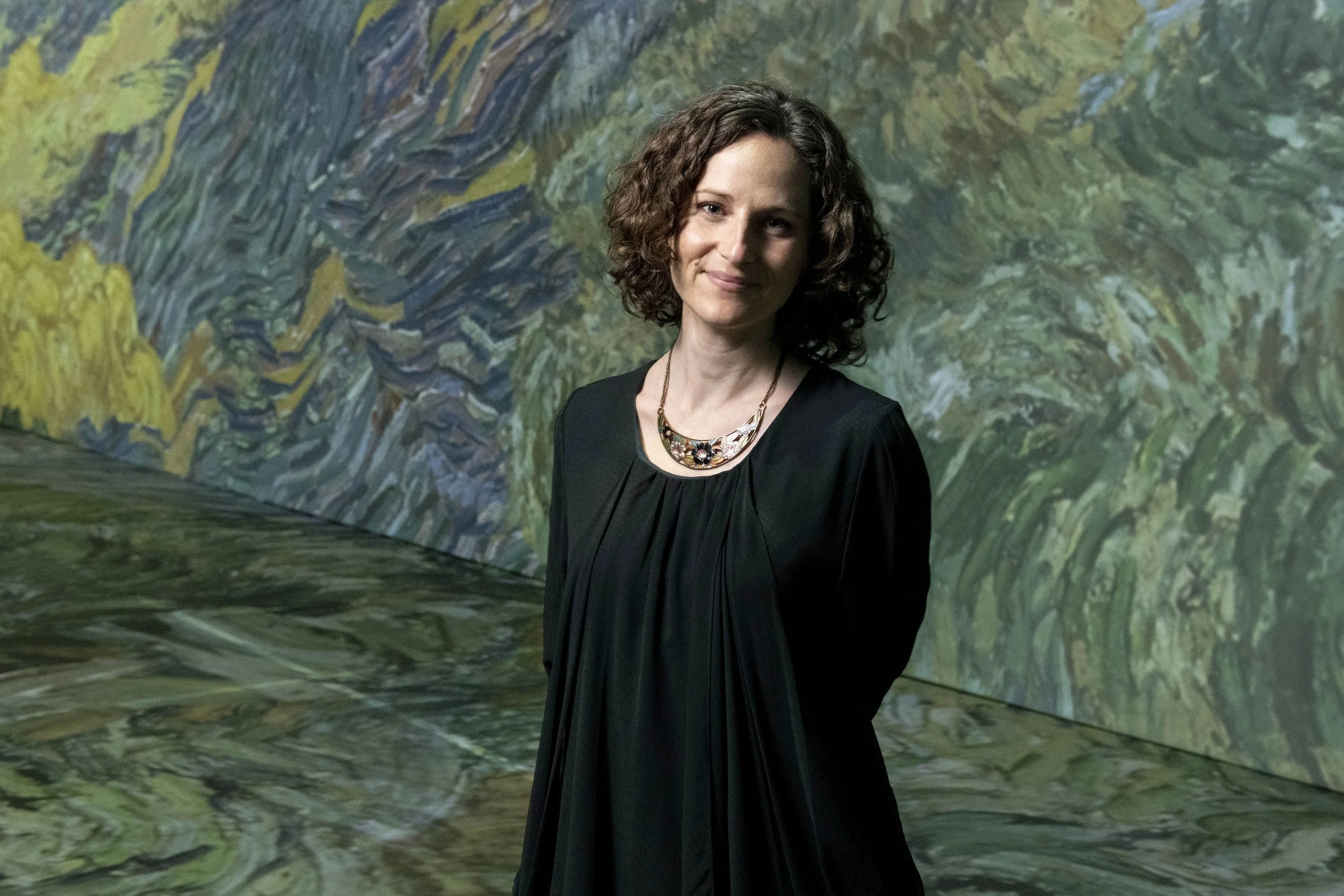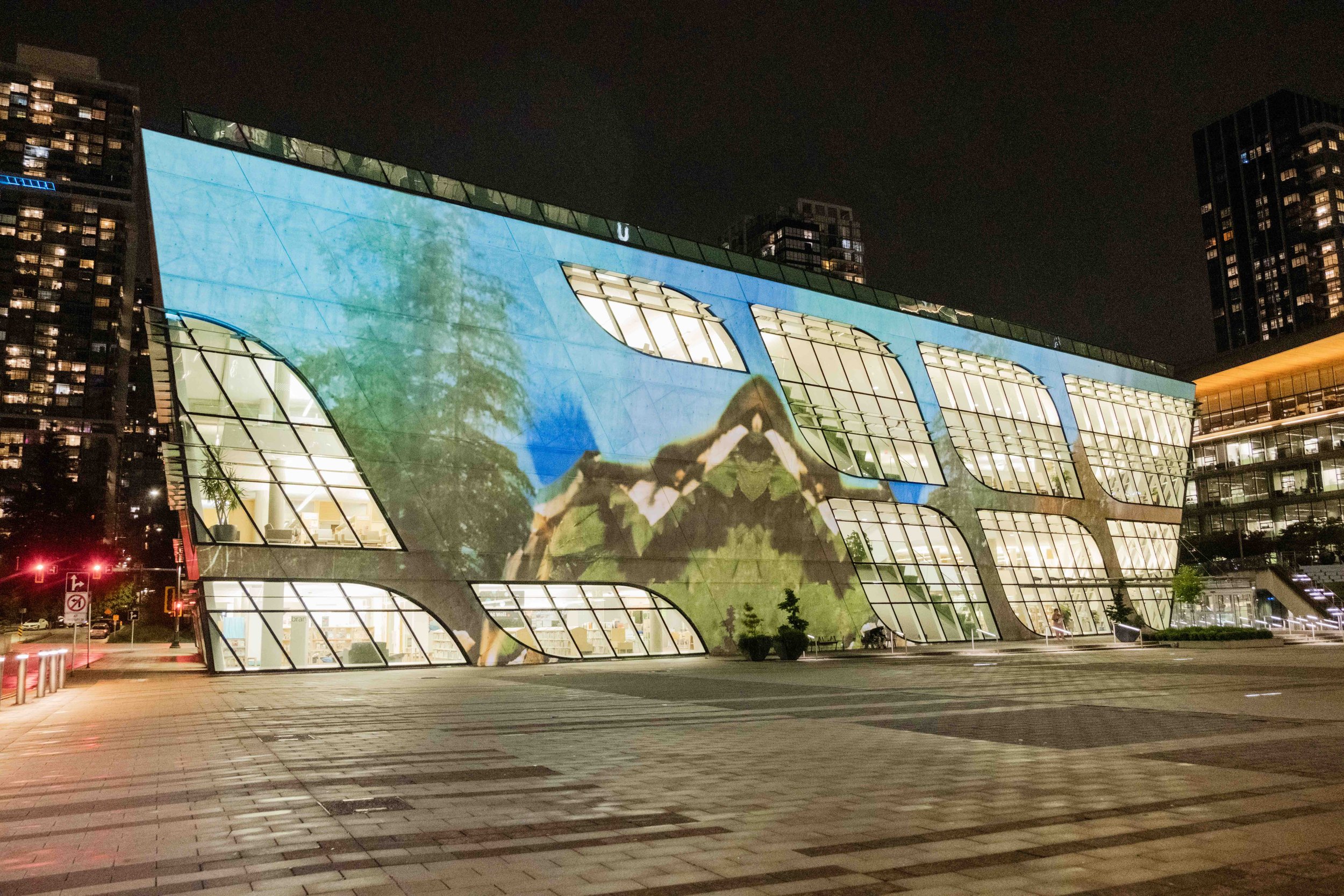Beyond Van Gogh: The Immersive Experience takes visitors past the artist's darker torments
Working from letters, historian Fanny Curtat helped build a large-scale show that celebrates the expression and urge to connect behind famous paintings
Beyond Van Gogh: The Immersive Experience’s main exhibition hall features 360-degree projections of more than 300 of the Dutch painter’s masterpieces.
Beyond Van Gogh: The Immersive Experience runs from February 5 to March 1 at Surrey’s Agriplex at the Cloverdale Fairgrounds
THE NEW IMMERSIVE exhibit Beyond Van Gogh draws its title from a desire to expand the public’s view of the iconic Dutch artist.
Instead of focusing on a painter who wrestled with his own demons and took his own life, Canadian art historian Fanny Curtat invites viewers to see the way he transformed that crisis through art—pushing beyond his anguish into vivid expressions of nature.
“He’s known for the darkness in his life—we know him most for the lowest part of his life. And yet you don't see that darkness when you see his work,” says Curtat, art history consultant for Beyond Van Gogh, the Paquin Entertainment Group show that opens February 1 at Surrey’s Agriplex. “It’s really powerful: it’s about beauty, the healing power of nature, about colour. It’s open and expansive.”
Seeing his brushwork magnified on metres-high walls and across the floor as you walk through Beyond Van Gogh, visitors will be struck by what Curtat thinks the key is to his paintings’ lasting power. “He’s painting not necessarily what he sees but what he feels,” she explains. “It becomes this expanded reality between Impression and Expressionism.”
She points to his famed Starry Night, which will surround visitors to the exhibit, and the way its swirling constellations and reaching trees express not just a landscape but Van Gogh’s own visceral reaction to it.
Fanny Curtat, art history consultant on Beyond Van Gogh.
One of the aspects that sets the show apart is its voice-over, drawn from the 18 years of correspondence Van Gogh had with Theo, the beloved brother he confided in and leaned on for support. Men, women, and children read the text in French, English, and Dutch, illustrating the universality of his feelings and doubts. Those writings also fill the introductory hall for the exhibit, Curtat says.
“You can really see how much Vincent is opening his heart into his art,” says Curtat, who pored through the letters for the first time to help prepare for this show. “I understood at that point why some art historians became teary eyed when they talk about him, because there is something incredibly touching about the way he is leaving it all out on the paper. At times there’s this childlike wonder and at other times there’s this philosophical depth. His art was truly something he wanted to share with the world. It [his writing] is a great way of connecting with him.”
Before entering the immersive exhibition hall, where visitors are surrounded by projections of more than 300 of Van Gogh’s paintings, viewers spend time in the Waterfall Room. Unique to Beyond Van Gogh, the chamber animates the artist’s famously kinetic brushwork, with guests immersed in whirling cosmos, undulating grass, and flickering sunlight.
“The Waterfall Room is really more like a portal ,” explains Curtat. “It feels like a stream and it sort of feels like the audience is walking against the current. It lets you know you're walking into something truly unconventional in terms of museum exhibits….It’s also a way the motion designers and digital artists could express the language of Vincent: you’ll see swirls, complementary colours like blues and yellow. It’s this dialogue between pigment and pixels.”
Curtat emphasizes the immersive show will never replace the experience of seeing a Van Gogh painting at a museum, but she embraces the way the touring exhibit reaches wider audiences to the vivid beauty of the paintings.
“The art world is grappling with it at the moment: it is very much a debate, which is great,” she says of the wave of new art-projection mega-exhibits. “Not everyone can go to New York to see the original Starry Night, let alone the fact that museums can be intimidating.”
The PhD candidate at the Université du Québec à Montréal sees an important place for shows like Beyond Van Gogh, with its mix of visceral experience with interpretation and information. She’s always amazed at the reaction of children, who can move around and play in the main exhibition hall’s expansive space with projected images.
“This is really about bringing his work to life as an experience,” she stresses. “Scale changes everything in your appreciation of art. That’s the first thing we learn as art historians....Here you feel the intensity of his brushwork. This is not someone applying delicate layers: there's a lot of energy. And maybe this experience will make you curious anobut experiencing the real thing.”















